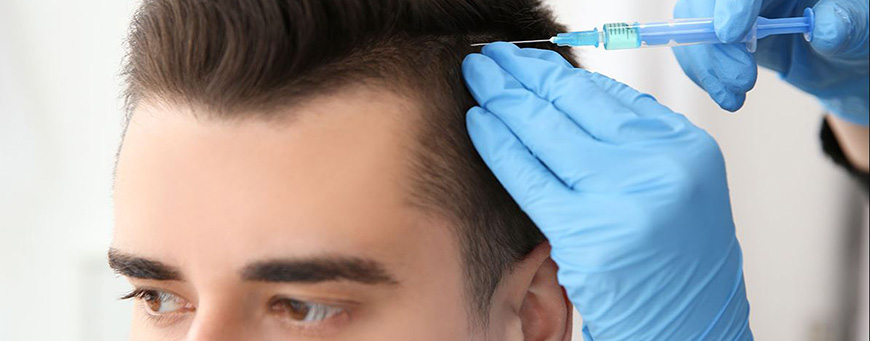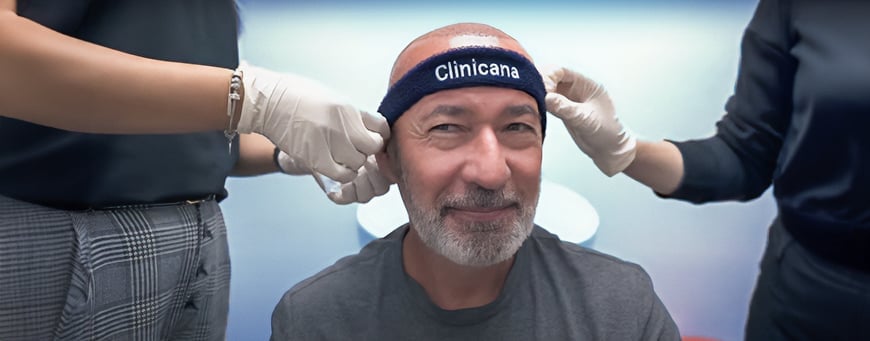Triangular alopecia: causes and treatment

Triangular alopecia, also called congenital or temporal triangular alopecia, is a disease characterized by the appearance of a triangular or oval shaped area in the temporal or frontal region of the head (hence its name), where there is a loss of almost total hair, and permanently.
Although it is a benign disorder with no major health consequences, and affects just 1 in 900 people, many people who search on Internet about the hair transplant cost in Turkey do it because they suffer from this type of alopecia and seek a solution, since it causes aesthetic alterations that, when reaching adulthood, maybe a source of concern. So the questions are: what are the causes of this alopecia? Does it have a treatment? Let´s answer all of them.
What is triangular alopecia?
Also known as congenital triangular alopecia because its believed that it´s linked to genes since birth, triangular alopecia is an asymptomatic form of non-scarring alopecia diagnosed by the appearance of an oval or triangular area -less than 4 cm in diameter- where hair loss occur; in triangular alopecia hair becomes thin and scarce, to the point that it can degenerate into an almost total alopecia in the affected area.
It usually appears as an unilateral lesion in frontal area, in parietal area (superior) or in temporal area (lateral) of scalp (if this is the case, we call it triangular temporal alopecia); however, in 20% of cases bilateral lesions are documented. The disease was described for first time in 1905 by the French dermatologist Sabouraud, and affects only 0.11% of population, although it is probably infra-diagnosed; it´s not progressive, and affects only a limited area.
Despite being a congenital hair loss, usually it doesn’t become evident in children until they are 2 or even 6 years old, hence some specialists prefer not to speak of “congenital” triangular alopecia. Besides, some studies have documented rare cases in which it begins in adulthood; so, due to this variability, the term “temporal triangular alopecia” or simply “triangular alopecia” is more accepted.
Due to its benign nature, not much is known about this pathology. It seems to be caused by an atrophy of hair follicles, whose number is normal in the affected area but are underdeveloped (hypoplasia), becoming almost imperceptible. It is believed to be triggered by genetic factors, although cases of family inheritance are rare. Most of those affected have a good health, and only occasionally it appears associated with neurological or skin disorders; but if there is a direct relationship, it’s still unknown.
Does temporal triangular alopecia have a treatment?
It is important to diagnose this type of pathology on time and by a specialist, in order to differentiate it from others similar hair pathologies such as alopecia areata, trichotillomania, scarring alopecia, etc. Due to the fact that its causes are not well known, triangular alopecia does not have a specific treatment, and the use of both minoxidil and topical or intralesional corticosteroids has not proven to be effective.
Therefore, the main treatment used for triangular alopecia is aesthetic and involves performing a hair transplant in the affected area; of course not in childhood, but once patient reaches adulthood and demands an aesthetic solution to the problem. The results obtained through a hair transplantation are very satisfactory, completely eliminating the problem with a simple intervention that only requires local anaesthesia.
If you suffer from triangular alopecia, at Clinicana we are specialists in all treatments and solutions for your hair. We have not just a highly skilled and qualified medical team and the most modern facilities; we also have all the international certifications that guarantee you a 100% safe hair transplant. Read the reviews on hair transplant in Turkey written by our patients, and ask for your free consultation now!

A hair transplant procedure can be a transformative experience. But to ensure your newly implanted follicles thrive, proper aftercare is very essential. This article equips you with key hair transplant recovery tips or post-operative instructions to minimize discomfort, optimize healing, and pave the way for a successful hair transplant journey for you. Hair transplant recovery […]

Dreaming of a full head of hair? Hair transplants are gaining traction, particularly in Turkey as clinics there are characterized by budget-friendly options and skilled surgeons. But, with so many clinics, the way of choosing the right one can be overwhelming. This article will help you find one of those top 10 hair transplant clinics […]

Finding the best hair transplant clinic in Istanbul is a crucial decision. In this article, we will look at some important factors to help you make an informed decision to ensure a successful surgery. How to choose the best hair transplant clinic in Istanbul? Istanbul has emerged as a sought – after destination for hair […]











